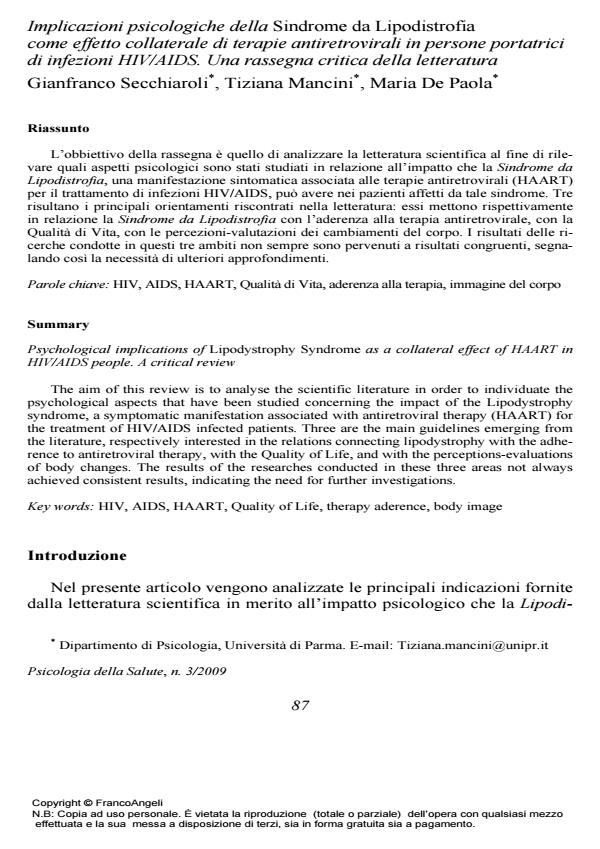Implicazioni psicologiche della Sindrome da Lipodistrofia come effetto collaterale di terapie antiretrovirali in persone portatrici di infezioni HIV/AIDS. Una rassegna critica della letteratura
Journal title PSICOLOGIA DELLA SALUTE
Author/s Gianfranco Secchiaroli, Tiziano Mancini, Maria De Paola
Publishing Year 2009 Issue 2009/3
Language Italian Pages 26 P. 87-112 File size 491 KB
DOI 10.3280/PDS2009-003006
DOI is like a bar code for intellectual property: to have more infomation
click here
Below, you can see the article first page
If you want to buy this article in PDF format, you can do it, following the instructions to buy download credits

FrancoAngeli is member of Publishers International Linking Association, Inc (PILA), a not-for-profit association which run the CrossRef service enabling links to and from online scholarly content.
Psychological implications of Lipodystrophy Syndrome as a collateral effect of HAART in HIV/AIDS people. A critical review - The aim of this review is to analyse the scientific literature in order to individuate the psychological aspects that have been studied concerning the impact of the Lipodystrophy syndrome, a symptomatic manifestation associated with antiretroviral therapy (HAART) for the treatment of HIV/AIDS infected patients. Three are the main guidelines emerging from the literature, respectively interested in the relations connecting lipodystrophy with the adherence to antiretroviral therapy, with the Quality of Life, and with the perceptions-evaluations of body changes. The results of the researches conducted in these three areas not always achieved consistent results, indicating the need for further investigations.
Keywords: HIV, AIDS, HAART, Quality of Life, therapy aderence, body image
Gianfranco Secchiaroli, Tiziano Mancini, Maria De Paola, Implicazioni psicologiche della Sindrome da Lipodistrofia come effetto collaterale di terapie antiretrovirali in persone portatrici di infezioni HIV/AIDS. Una rassegna critica della letteratura in "PSICOLOGIA DELLA SALUTE" 3/2009, pp 87-112, DOI: 10.3280/PDS2009-003006